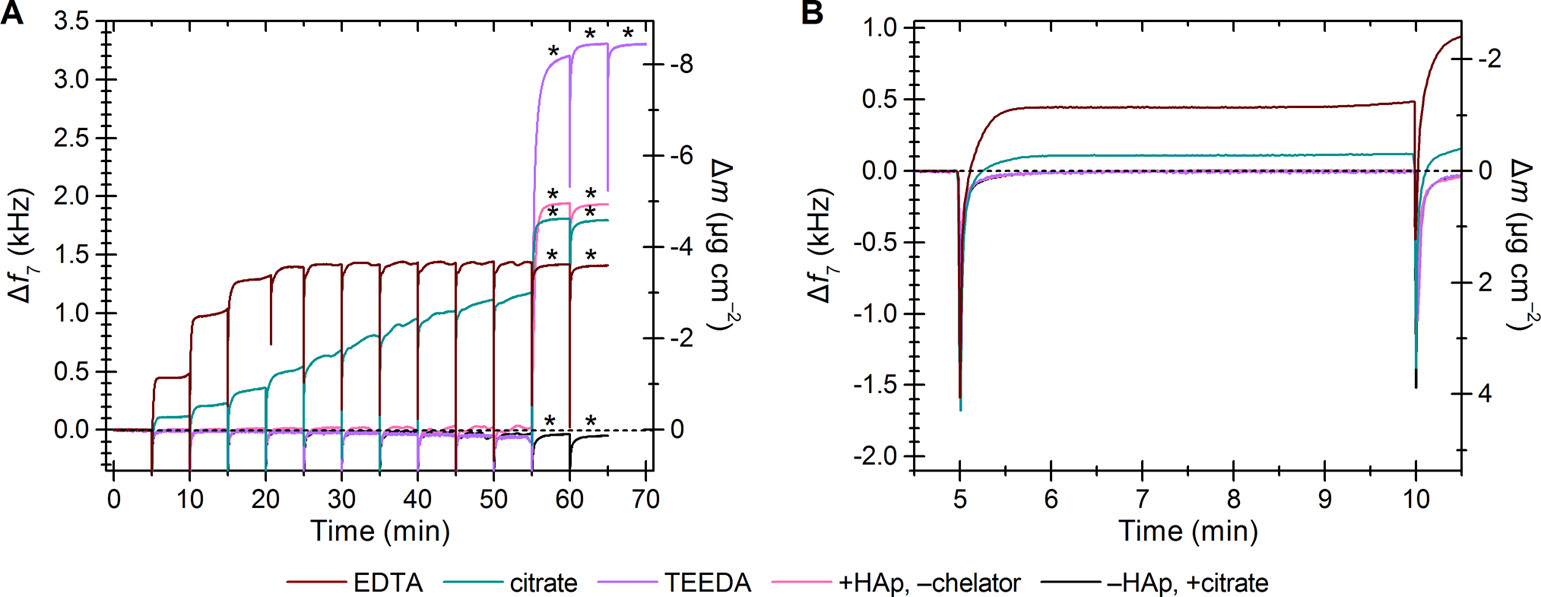This paper sets out in vitro protocols for studying the relative effectiveness of chelators used in the dissolution-based treatment of hard calcinosis. Pulverized hard calcinosis samples from human donors or synthetic hydroxyapatite nanoparticles were deposited by electrophoretic deposition on the surface of a quartz crystal microbalance sensor. Over 150 deposits of <20 μg were dissolved over the course of 1 h by aliquots of buffered, aqueous solutions of two calcium chelators, EDTA and citrate, with the surface-limited dissolution kinetics monitored with <1 s time resolution. There was no statistically significant difference in dissolution rate between the four synthetic hydroxyapatite materials in EDTA, but the dissolution rates in citrate were lower for hydroxyapatite produced by acetate or nitrate metathesis. Hard calcinosis and synthetic hydroxyapatites showed statistically identical dissolution behavior, meaning that readily available synthetic mimics can replace the rarer samples of biological origin in the development of calcinosis treatments. EDTA dissolved the hydroxyapatite deposits more than twice as fast as citrate at pH 7.4 and 37 °C, based on a first-order kinetic analysis of the initial frequency response. EDTA chelated 6.5 times more calcium than an equivalent number of moles of citrate. Negative controls using nonchelating N,N,N′,N′-tetraethylethylenediamine (TEEDA) showed no dissolution effect. Pharmaceutical dissolution testing of synthetic hydroxyapatite tablets over 6 h showed that EDTA dissolved the tablets four to nine times more quickly than citrate.

Fan Fei, Andrzej Gallas, Yun-Chuan Chang, Yikun Rao, Alan Christy Hunter, Richard E. P. Winpenny, Ariane L. Herrick, Nicholas P. Lockyer, and Christopher F. Blanford
